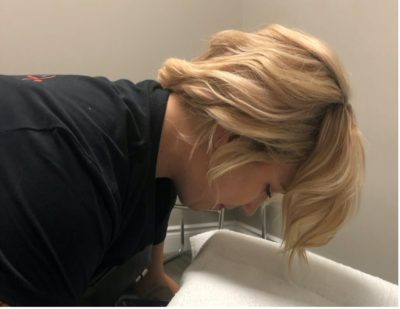Neck Strengthening for the Treatment and Prevention of Neck Pain
By: Dr. Kevin McIntyre B.Kin., DC
When was the last time you did neck strengthening exercises? Most people don’t think about strengthening their neck. Instead, they stretch the muscles of the neck when it feels sore and stiff, with little focus on the prevention of neck pain through strength exercises. If we’re looking at building capacity and protecting the neck from injury, we would probably put more focus on strengthening as opposed to stretching. Thankfully, we don’t have to choose one or the other; we can look at utilizing stretching and strengthening as options for the treatment and prevention of neck pain. For this blog, we’re going to focus on the underutilized option of neck strengthening.
As per every blog we post here, the following exercises may or may not be appropriate for you. It’s important to speak with a knowledgeable health care practitioner who understands your condition so that your rehabilitation is tailored to your specific needs. The recommendations may depend on whether pain is present, whether there is significant tissue damage or whether there is simply just irritation of cervical structures.
In the realm of tendon research, there is ample evidence supporting the idea of an isometric muscular contraction for pain control. (An isometric contraction is when you don’t move the area but just hold a muscular contraction). This approach can also be applied to many types of neck pain, and they are a great starting point for strengthening. Isometrics can also be great for modulating pain and re-introducing a muscular challenge to a painful, weak, or injured area.
Supine Deep Cervical Flexion – tuck your chin as if you’re nodding ”yes” with just your skull, then lift your head off the ground and hold.
Side-lying Isometric – Similar to above, you’re going to lift your head off the ground and hold it in a position similar to what is pictured.
Prone Extension Isometric – Lying on the stomach, gently tuck your chin in (as if you’re nodding “yes” with your skull) and lift your face off the ground. Hold the position (isometric contraction).
You can’t go wrong with getting strong. There are many reasons to strengthen your neck. For example, neck strength is a significant predictor of concussion; for every one pound increase in neck strength, the odds of a concussion are decreased by 5%. To get specific, head rotation has been linked with concussion, and a strong neck may protect against rotational stress. Tierney et al. found that among soccer players, females had a greater head acceleration in response to an applied force when compared to males. They postulated that this was likely due to weaker neck strength. If you think of it logically, a weak neck might have a poorer ability to stabilize the skull when subjected to external forces. A strong neck might help limit the severity or occurrence of concussion when a rotational force is applied to the area. When isometric exercises become too easy, perhaps a reasonable progression would be adding motion, as shown below.
Supine Deep Flexion Repetitions – Similar to the isometric flexion exercise listed above, we’re just adding up and down motion to challenge the front of the neck.
Side-lying lateral flexion – Similar to the lateral flexion isometric exercise shown above, the progression is adding motion up and down, challenging the side of the neck.
Prone Extensions – While lying on the stomach, move the head up and down within a pain-free range of motion. Basically, you’re nodding yes while lying on your stomach.
Rotation can be a very difficult movement for the neck and for those with neck pain. Slow rotational movements while supine and prone (lying on the back and on the stomach) is a good way to challenge the muscles of the neck. This can be done side-lying as well. Keep in mind these exercises have no resistance other than gravity. For cases that need advanced challenge and feel the need for further challenge to the muscles of the neck, resistance can be added to all these exercises, although this would be considered advanced and are best prescribed and recommended by a suitable professional.
Supine rotations – While lying on the back, raise the head off the table and slowly rotate left and right.
(Prone Rotations – Similar to the above exercise, but you’re lying on your stomach and lifting your head off the table, then turning your head slowly left and right).
References
Collins CL, Fletcher EN, Fields SK et al. Neck strength: a protective factor reducing risk for concussion in high school sports. J Primary Prevention. 2014 (online).
Tierney RT et al. Sex differences in head acceleration during heading while wearing soccer head gear. Journal of Athletic Training, 43(6), 578-584.















